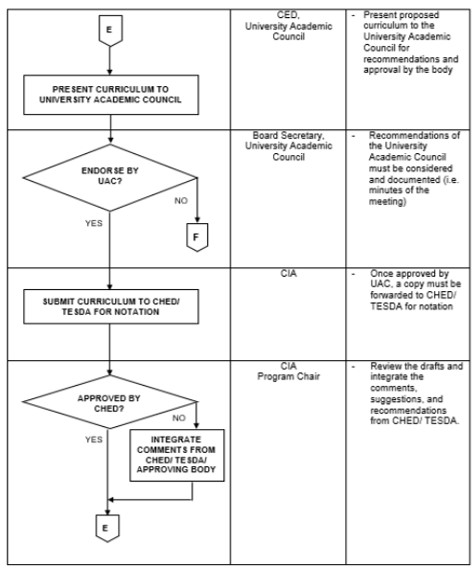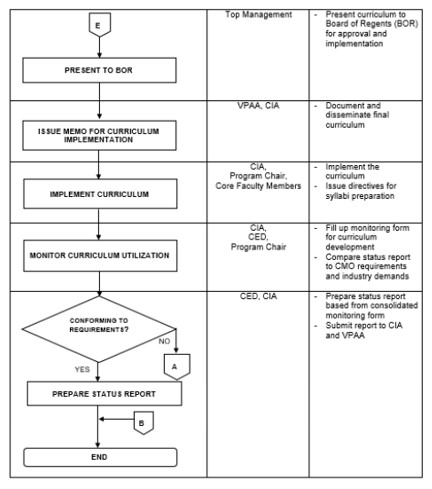Program Approval
In order to ensure that the academic and technical profile of the graduating learners of the different programs offered in the University highly suits the aptitude and competencies required in the industry, the Pangasinan State University initiated curriculum development programs through proper alignment of competencies. The Outcomes-Based Education (OBE) model is adopted by the University, which provides more significant emphasis on observable and measurable outcomes.
The University follows the institutional operation process for curriculum development and program approval to ensure efficient and effective workflow in preparing learners to achieve and master the competencies required by the education sector and the industry.
In summary, the curriculum development and program approval process are a working system that could be evaluated and improved to optimize graduates’ production who uphold Pangasinan State University’s core values.
Flowchart for Processing of Application for Program Revision



As soon as the Commission on Higher Education (CHED) downloads the
Memorandum Order on curriculum development, the Top Management of the of the University determines the need for curriculum development by revisiting the Curriculum and its alignment to the proposed update of CHED and TESDA.
The University is recommended to review the curriculum every four years and fillup the form for a curriculum development application in case the need arises.
Once the application is approved, the Campus Executive Director endorses the application to the Curriculum and Instruction Office. The Director of the Curriculum and Instruction works closely with the Program Chairperson in reviewing the requirements of CHED and TESDA. They will integrate industry standards, results of benchmark analysis, and recommendations of accrediting institutions.
Technical Working Group (TWG) for curriculum review and revision consults with experts and other stakeholders for the preparation of core and general education subjects. The convening core faculty members write the draft of the curriculum. The Campus Curriculum Development and Review Council validates the curriculum and presents the proposed curriculum to the Campus Academic Council for recommendations and approval of the body. The recommendations are documented by the Campus Executive Secretary in the minutes of the meeting.
The recommendations are integrated with the proposed curriculum.
The Campus Executive Director presents the curriculum to the University Academic Council. Recommendations are documented by the Board Secretary and integrated with the final copy of the curriculum, which will be subsequently submitted to the CHED for notation.
Once approved by the CHED, the Top Management presents the curriculum to the Board of Reagents (BOR) for approval and implementation.
The VPAASS issues a memo for curriculum implementation while the Director for Curriculum and Instruction monitors the implementation of the curriculum for the different programs in the University. Hence, a status report is being prepared.
